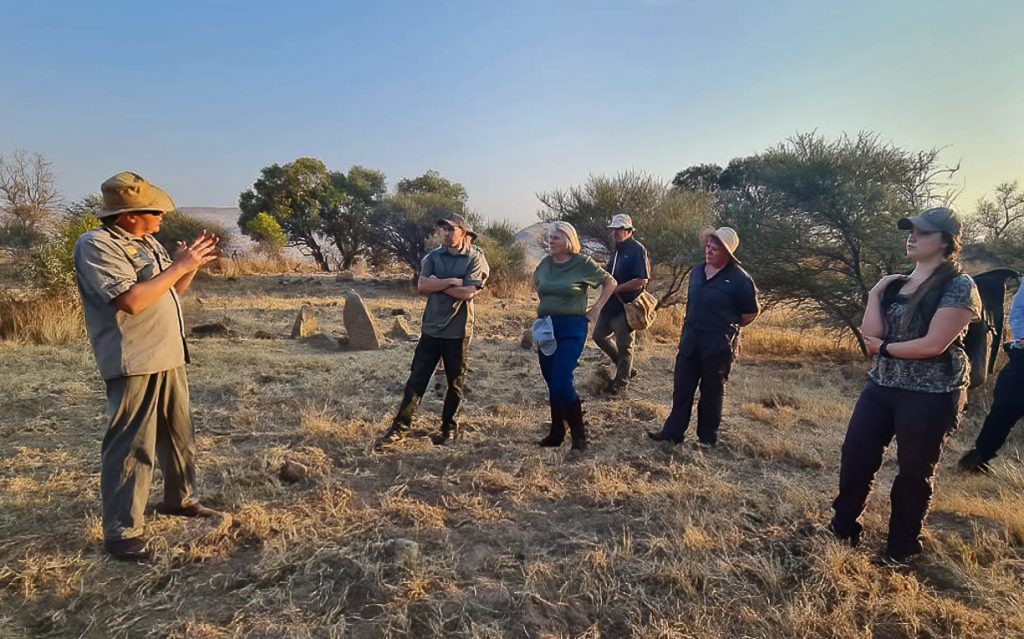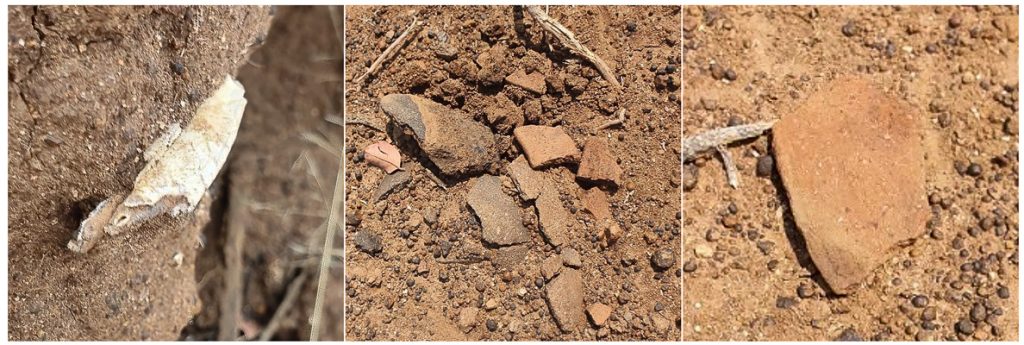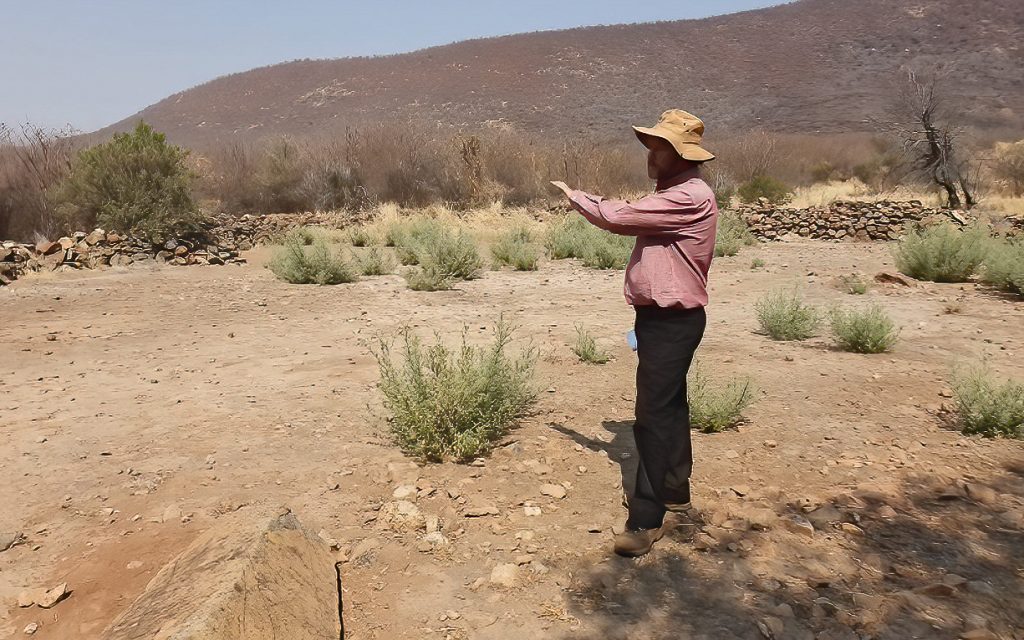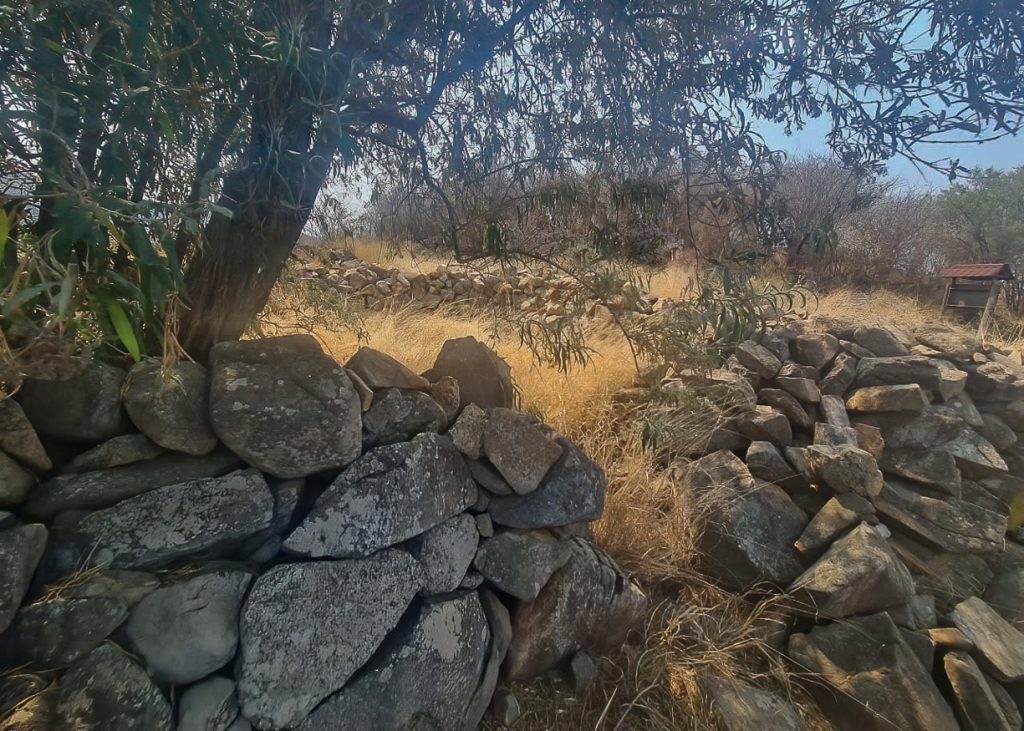Report by Britta Zawada.
The Archaeology weekend was in essence a journey through time looking at the development of modern humans, starting from Australopithecus afarensis (between 4 and 3.5 million years ago)to Australopithecus africanus (between 2.5 and 2 million years ago) roaming the African plains, moving on to Homo habilis, Homo erectus (about 1 million years ago) right up to Homo sapiens sapiens. The development of human characteristics such as bipedalism, binocular vision and a larger brain coincided with ecological changes such as the development of the savanna grasslands and changes in temperature and rainfall. These changes can also be seen in the chronological classification through the ages made by archaeologists.
Archaeologists use information about the following types of evidence from the stratigraphy of archaeological sites to reconstruct human activity in prehistory (history before the written record):
- The controlled use of fire for domestic purposes, for example, in fire pits
- The changes in meat-eating from scavenging to collective pit hunting to individual hunting with weapons like spears and bow and arrows
- The changes in tool making from chopper tools to the prepared core technique which enabled people to use flake tools rather than core tools, to finally the smaller microliths such as spear heads which were hafted onto spears and could be used for working wood, bone and eggshells
- The domestication of both plants as crops and animals for both sustenance and social and economic markers of wealth
- The different ways of making and decorating pottery and clay containers
- The smelting of iron, gold and copper
- The layout of the structures on sites of early settlements, for example whether there is an outer stone wall or not.
The methods used by Archaeologists from excavations, through dating and the reconstruction of sites and experimental archaeology, imagining and re-enacting the lives of prehistoric people, correlated with the ethnography and early known history of existing groups in modern times, was a fascinating story of weaving information and methods from different sciences and disciplines together to imagine the lives of our ancestors. The very interdisciplinary nature of Archaeology was well exemplified by the debate of whether the study of animal remains in archaeological excavations should be called zoo-archaeology or archaeo-zoology
First, we went up a very steep 4×4 road not much used, to Mabele-a-Podi to look at a Late Iron Age / Late Moloko Site overlooking the main river exit of the Mankwe River to the inner perimeter of Pilansberg. The traditional round structure of the settlement, arranged around the central cattle pattern, was adapted to fit onto the elongated spurs of the ridges in the area. The central cattle area, the rubbish midden and the different houses with the storage bins at the back are clearly visible.
Then we went to the ridges overlooking Motlhobo Drive, which showed some possible Nguni influence in the otherwise predominantly Sotho/Tswana area in that it had sunken storage pits within the cattle enclosure (rather than the usual storage bins being on raised stones behind the houses and sometimes near the cattle enclosures) one of which had been used for a human burial.
The Early Moloko site just off Dithabaneng Dr was the most exciting where we as students could hunt for artefacts ourselves and pottery shards, cattle bones (no, they were not human after all!) and even a lower grinding stone was found, but left in place.
Finally, we visited the Iron Age Site that is also open to the public with some discussion of the social and ritual purposes of the different areas; the cattle area being the male domain with the kgotla on the side, with the female huts further around the perimeter.
Ed’s Note: Thank you to Britta for an insightful report of a weekend that stands out as a favourite for many students.



